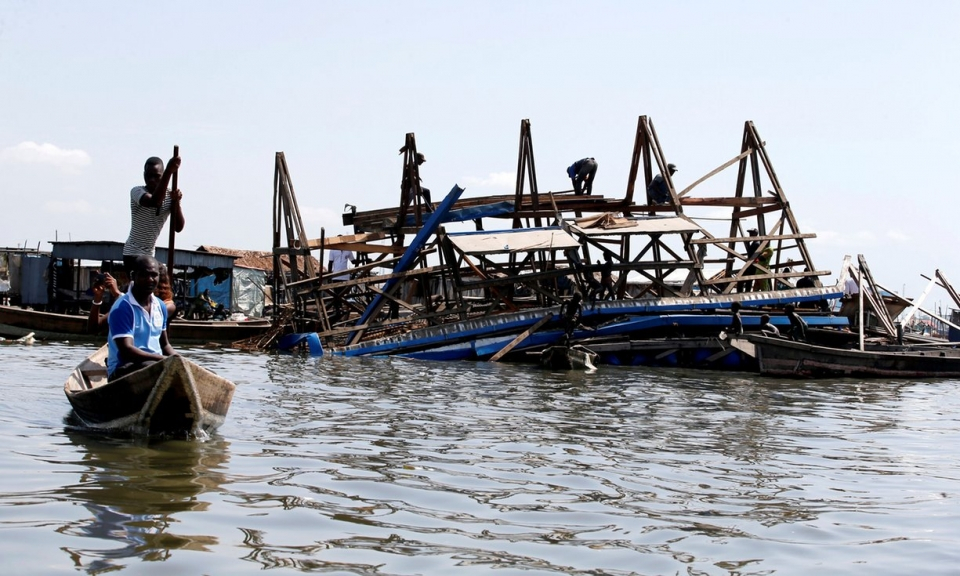Some fear the whole area and its 300,000 residents are at renewed risk of being cleared out for redevelopment
Adeyemi designed the school using locally sourced wood and bamboo, and floated it atop 250 plastic barrels. The concept won multiple awards and was hailed as reflective of a new style of architecture, created to meet local needs and the practical environmental considerations of this waterfront community.
It also arrived at a crucial time for the city. In 2012, the Lagos state government declared Makoko illegal, and tried to evict its residents in order to raze the entire floating slum. Officials argued Makoko’s living conditions were unsanitary and that it violated environmental legislation. Critics of the demolition countered that its prominent presence on the waterfront embarrassed local officials, and said Makoko was a vibrant community of up to 300,000 people who had adapted to waterfront living with an ingenuity that deserved to be celebrated and assisted.
....
Shemede argues it was an accident waiting to happen. He says he decided to relocate the children to another school under pressure from local parents, who had voiced concerns about the safety of the structure that vibrated in the rain.
There were other concerns. The lagoon community had initially been ecstatic about it, but grew frustrated with the amount of time it took to open: though it was built in 2013, it only welcomed students in October 2015. Some community members were disappointed that the 220 sq metre school could only safely accommodate around 60 students, despite the large number of classes in need of new space in Makoko.
Shemede says he had also complained to Adeyemi about the community being left to maintain the building. He argues that, had the school been one storey tall, like the rest of the buildings in Makoko, it might have been stronger.
However, Adeyemi maintains the structure “collapsed due to wear, tear and damages in the last months”. He says: “Being a first prototype, the structure was expected to have a limited lifespan with some maintenance. It was no longer in use, shored and discussions were incidentally in progress by the community to bring it down this week and salvage some of its reusable equipment and materials.”
One of the men helping clear the rubble on the platform is Jeunbete, Shemede’s older brother, who introduced himself as a leader of the “Houses of Lagoon”, the name local residents use to refer to their waterside community. “The foundation was not too strong,” Jeunbete says, gesturing to the debris. “Kunlé told me that they’ve built a stronger version in Europe, and so he’s going to come and do the same thing here also.”
The stronger version Jeunbete refers to is MFS II, the second generation of the Makoko Floating School, which NLÉ calls “a new, improved iteration” of the original. In a press release, NLÉ said it had plans to upgrade the original before the collapse. It said the original school had served its purpose as a prototype, had been used intensively and had provided exceptional service to the lagoon community.
....
